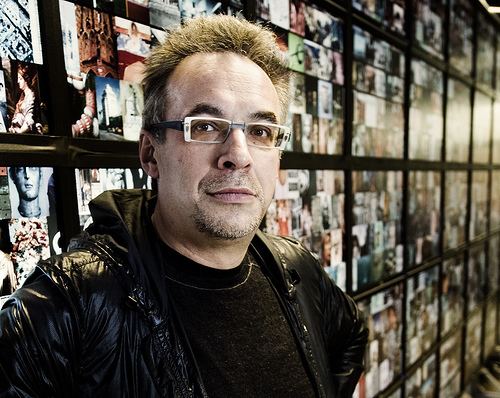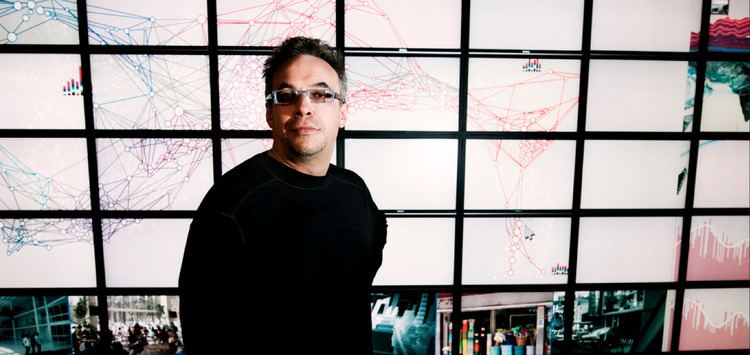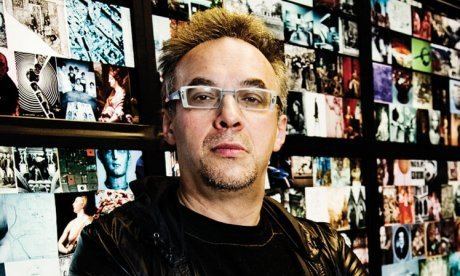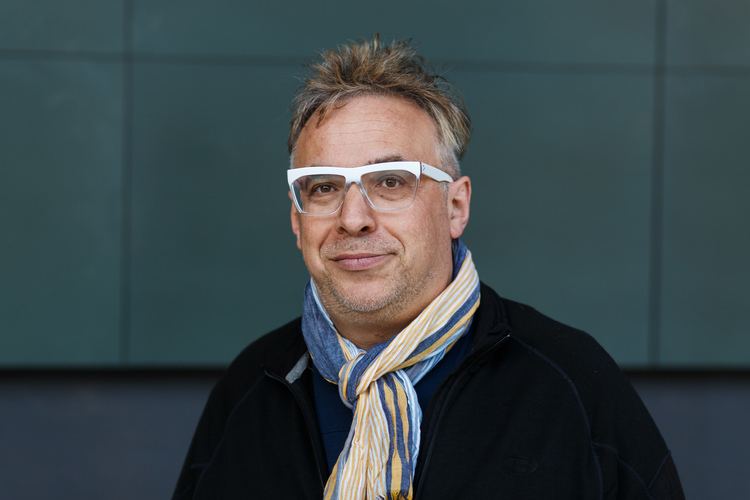Website www.manovich.net Name Lev Manovich | Role Author | |
 | ||
Notable work Software Takes Command, Soft Cinema: Navigating the Database, Black box - white cube, The Language of New Media Awards Guggenheim Fellowship for Humanities, US & Canada Books The language of new m, Software Takes Command, Soft Cinema: Navigatin, The Illusions: A BIT of Th, Black box ‑ white cube Similar People Marshall McLuhan, Dziga Vertov, Noah Wardrip‑Fruin | ||
Dr lev manovich photography as big data how to find patterns in millions of instagram images
Lev Manovich (born 1960) is an author of books on new media theory, professor of Computer Science at the City University of New York, Graduate Center, U.S. and visiting professor at European Graduate School in Saas-Fee, Switzerland. Manovich's research and teaching focuses on digital humanities, social computing, new media art and theory, and software studies
Contents
- Dr lev manovich photography as big data how to find patterns in millions of instagram images
- Language of tomorrow lev manovich at tedxreset 2010
- Biography
- Software Takes Command
- Soft Cinema
- The Language of New Media
- Books
- References

His best known book is The Language of New Media, which has been widely reviewed, translated into ten languages and used in classes around the world. Manovich's latest book Software Takes Command was published in 2013 by Bloomsbury and the earlier draft was released under a Creative Commons license.

His research lab Software Studies Initiative (2007-) pioneered computational analysis of massive collections of images and video ("cultural analytics"). His lab was commissioned to create visualizations of cultural datasets for Google, New York Public Library, MoMA.

Language of tomorrow lev manovich at tedxreset 2010
Biography

Manovich was born in Moscow, USSR, where he studied painting, architecture, computer science, and semiotics. After spending several years practicing fine arts, he moved to New York in 1981. His interests shifted from still image and physical 3D space to virtual space, moving images, and the use of computers in media. While in New York he received an M.A. in Experimental Psychology (NYU, 1988) and additionally worked professionally in 3D computer animation from 1984 to 1992. He then went on to receive Ph.D. in Visual and Cultural Studies from University of Rochester 1993, under the supervision of Mieke Bal. His Ph.D. dissertation The Engineering of Vision from Constructivism to Computers traces the origins of computer media, relating it to the avant-garde of the 1920s.

Manovich has been working with computer media as an artist, computer animator, designer, and programmer since 1984. His art projects include Little Movies, the first digital film project designed for the Web (1994-1997), Freud-Lissitzky Navigator, a conceptual software for navigating twentieth century history (1999), and Anna and Andy, a streaming novel (2000). He is also well known for his insightful articles, including New Media from Borges to HTML (2001) and Database as Symbolic Form (1998). In the latter article, he explains reasons behind the popularity of databases, while juxtaposing it to concepts such as algorithms and narrative. His works have been included in many key international exhibitions of new media art. In 2002 ICA in London presented his mini-retrospective under the title Lev Manovich: Adventures of Digital Cinema.
Manovich has been teaching new media art since 1992. He has also been a visiting professor at California Institute of the Arts, UCLA, University of Amsterdam, Stockholm University, and University of Art and Design Helsinki. In 1993, students of his digital movie making classes at the UCLA Lab for New Media founded the Post-Cinematic Society which organized some of the first digital movie festivals based on his ideas about new media such as database cinema.
In 2007 Manovich founded the Software Studies Initiative.
On November 8, 2012, it was announced that Lev Manovich would be joining the faculty of the City University of New York's Graduate Center in January 2013, with the goal of enhancing the graduate schools' digital initiatives.
Software Takes Command
Manovich's most recent book is Software Takes Command (2013). It is part of the series International Texts in Critical Media Aesthetics, founded by series editor Francisco J. Ricardo.
Soft Cinema
His digital art project Soft Cinema was commissioned by ZKM for the exhibition Future Cinema (2002–03; traveling to Helsinki, Finland, and Tokyo, Japan, in April 2003. "At the heart of the project is custom software and media databases. The software edits movies in real time by choosing the elements from the database using the systems of rules defined by the authors". Each Soft Cinema run offers a unique viewing experience for the audience; the software works with a set of parameters that allow for almost every part of a film to change.
Soft Cinema projects mines the creative possibilities at the intersection of software culture, cinema, and architecture. Its manifestations include films, dynamic visualization, computer-driven installations, architectural designs, print catalogs, and DVDS.
The Language of New Media
His book, The Language of New Media, covers many aspects of cultural software: for example, he identifies a number of key tools or processes (he calls them 'operations') that underpin commercial software from word processing to video editing programs. These include the conventions of 'cut and paste' copy, find, delete, transform, etc. The extracts we have chosen highlight significant 'new' aspects of the new media Manovich is concerned with. He is often concerned with visual culture and especially with moving image, so the first sections, 'The Database' and "Database and Algorithm', explore something of the distinct ways in which computers store and manipulate information (here, for example, moving image footage). He compares this with traditional techniques of manipulating and editing film stock. The 'Navigable Space' extract is also concerned with the moving image, but this is the moving image as a mapping or modeling of virtual space. From architectural 'fly-throughs' to the visceral and violent pleasures of exploring the corridors of the videogame Doom, virtual space is discussed as a significant new cultural form that draws on pre-digital visual and cinematic culture.
In "New Media from Borges to HTML" (2001), Manovich describes the eight definitions of "new media":
- New Media versus Cyberculture
- New Media as Computer Technology Used as a Distribution Platform
- New Media as Digital Data Controlled by Software
- New Media as the Mix Between Existing Cultural Conventions and the Conventions of Software
- New Media as the Aesthetics that Accompanies the Early Stage of Every New Modern Media and Communication Technology
- New Media as Faster Execution of Algorithms Previously Executed Manually or through Other Technologies
- New Media as the Encoding of Modernist Avant-Garde; New Media as Metamedia
- New Media as Parallel Articulation of Similar Ideas in Post-WWII Art and Modern Computing
